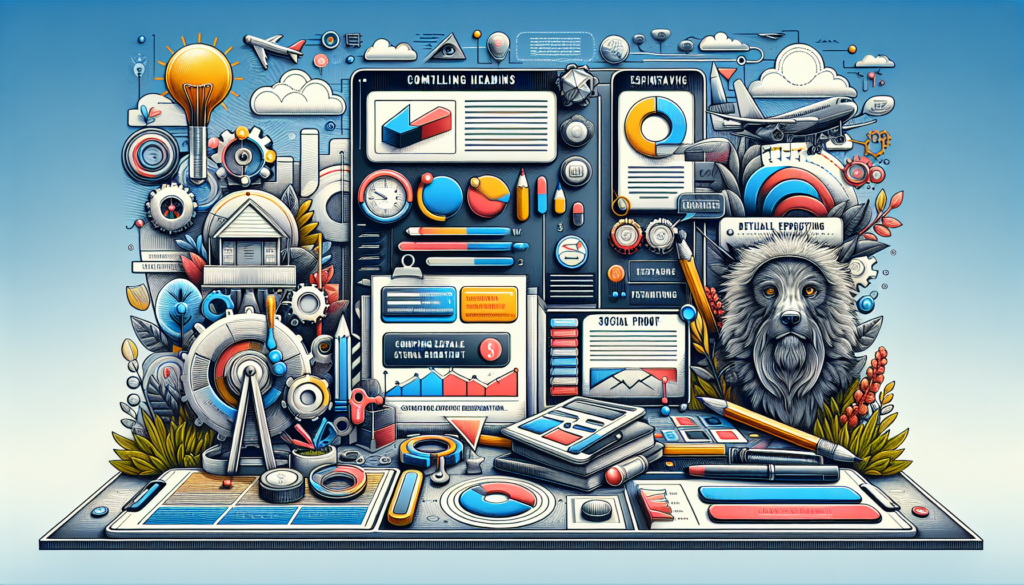In the construction of landing pages, the convergence of design, content, and user psychology forms the core of a successful strategy. Effective landing pages translate into conversions, reinforcing the importance of meticulous orchestration of each element involved. Understanding the keys to a successful landing page can make the difference between capturing a lead or losing it in the vast digital ocean.
The Impeccable UX/UI Design
UX/UI Design Principles
Information architecture (IA) and interaction design (IxD) are the cornerstones of a landing page that engages. IA should guide visitors through an intuitive journey, providing the necessary information with as little friction as possible. Meanwhile, IxD emphasizes the creation of interaction points that are both aesthetically pleasing and functional.
Usability Considerations
Focusing on accessibility is crucial; a landing page must be fully accessible to individuals with diverse abilities. Additionally, loading speed is critical: research shows that 53% of mobile visits are abandoned if a page takes more than 3 seconds to load.
High-Impact Content
Targeted Content Creation
The value proposition must be clearly articulated, showing visitors how their life will be improved by acquiring the product or service. This content should be supported by tangible evidence, such as case studies, statistics, and testimonials, offering a credible and attractive proposal.
Elements of Persuasion
The theory of Cialdini’s 6 Principles of Persuasion – reciprocity, commitment and consistency, social proof, authority, scarcity, and liking – are intensely applied in effective copywriting for landing pages. Integrating these principles can significantly increase conversion opportunities.
Technology and Tools
Landing Page Creation Platforms
Selecting a robust platform directly affects the ability to design, deploy, and optimize landing pages. Tools like Unbounce, Leadpages, and Instapage offer flexible templates and deep analytical capabilities.
Conversion Rate Optimization (CRO)
Landing pages are not static; they evolve through continuous optimization of the conversion rate. Using A/B testing and web analytics allows for the identification and improvement of elements that are not performing at their full potential.
SEO Principles on Landing Pages
Technical SEO
Landing pages should be structured with a clear information hierarchy and efficient on-page optimization, employing practices such as proper use of tags, meta descriptions, and friendly URLs.
Content and Keywords
Including relevant keywords in the content in a natural and strategic way is imperative for visibility in search engines. Keyword research and competitor analysis are steps that cannot be overlooked.
User Psychology and Testing
User Behavior Analysis
Incorporating heat maps and eye-tracking tools can provide a deeper understanding of how users interact with the landing page. These insights can lead to adjustments that dramatically improve the user experience.
Continuous and Iterative Testing
Testing is the pulse of the landing page and must be conducted continuously. The iterative approach ensures that data-driven changes are being implemented and measured effectively.
Notable Case Studies
Success Stories
Companies like Dropbox and Airbnb have demonstrated the power of an optimized landing page; by simplifying the UX and providing an attractive proposition, they have achieved enviable conversion rates. Studying these cases provides clarity on effective strategies and the spectrum of possible innovation.
Future Innovations in the Landing Page Space
Artificial Intelligence and Personalization
The adoption of AI in landing pages is on the rise, allowing for large-scale personalization that can adapt to the specific needs of users in real-time.
Augmented Reality (AR) and Virtual Reality (VR)
The implementation of AR and VR is beginning to take shape, suggesting a future where interactions become even more immersive and compelling.
In summary, a successful landing page is the synthesis of a well-defined strategy and high-caliber technical execution. By keeping a finger on the pulse of technological innovations and user psychology trends, brands can build not just a landing page but a destination in itself, where visitors become loyal advocates of the brand.

